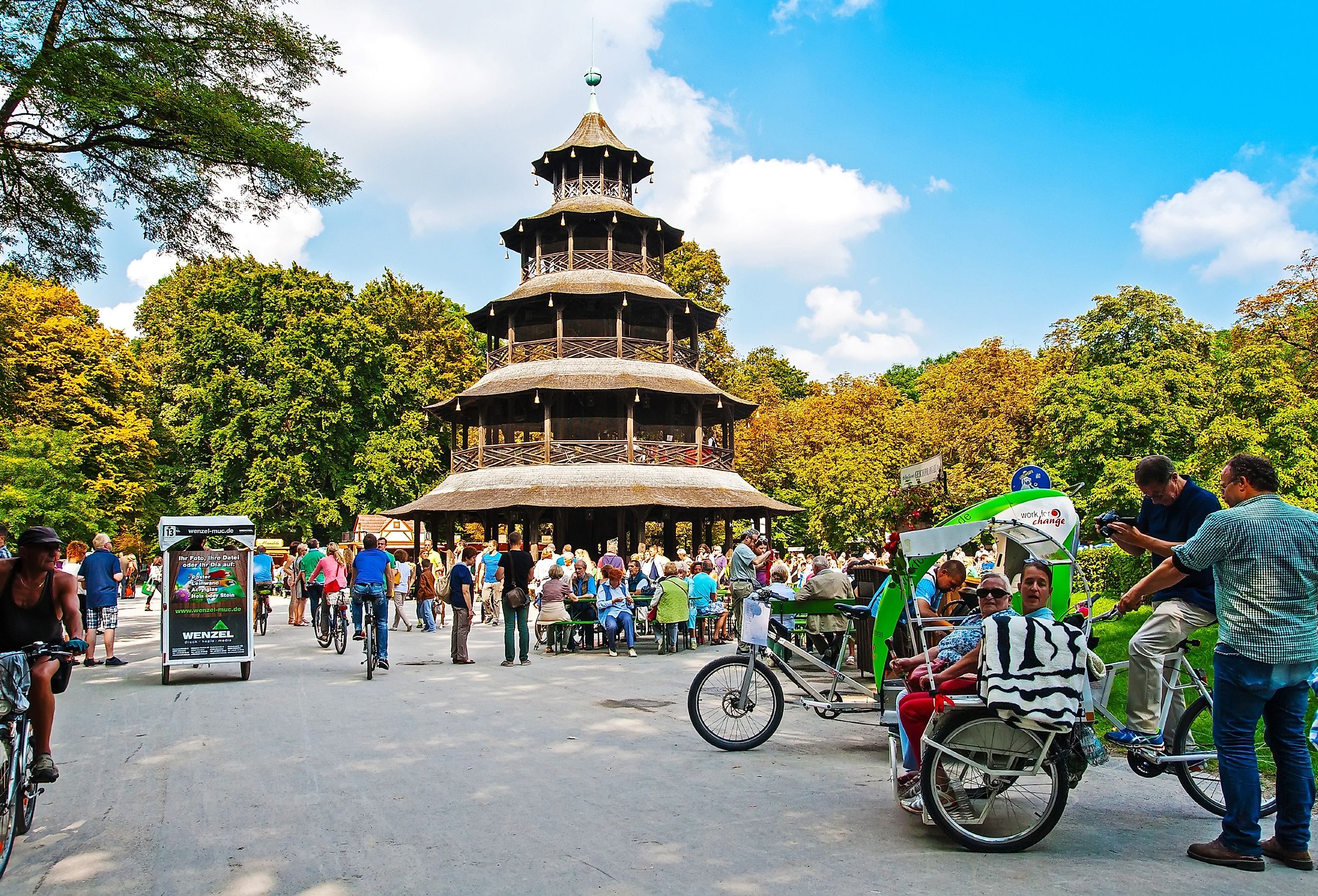
10 Best Destinations for a 3-day Stay in Munich
Famous the world over as the birthplace of Oktoberfest, the world’s oldest and most popular beer festival, Munich (München) is one of the best places to visit in Germany for travelers looking to get a taste of authentic old Europe. The capital of Bavaria, Munich’s rich history is everywhere evident and is extremely easy (and a lot of fun) to explore, with important historical and cultural landmarks at every turn.
Plan your visit right with a stay in the city’s "Altstadt" (Old Town) district, and you will not only be within easy walking distance of the top tourist attractions in Munich, but you will also find yourself close to the city’s excellent public transit system. Buses, streetcars, subways, and trains are all close at hand to whisk you away to sightseeing opportunities outside the Old Town, as well as to Munich’s airport, along with attraction admissions, using the handy Munich City Pass.
To help you plan the perfect German getaway, discover the ten best destinations for a three-day stay in Munich.
Marienplatz
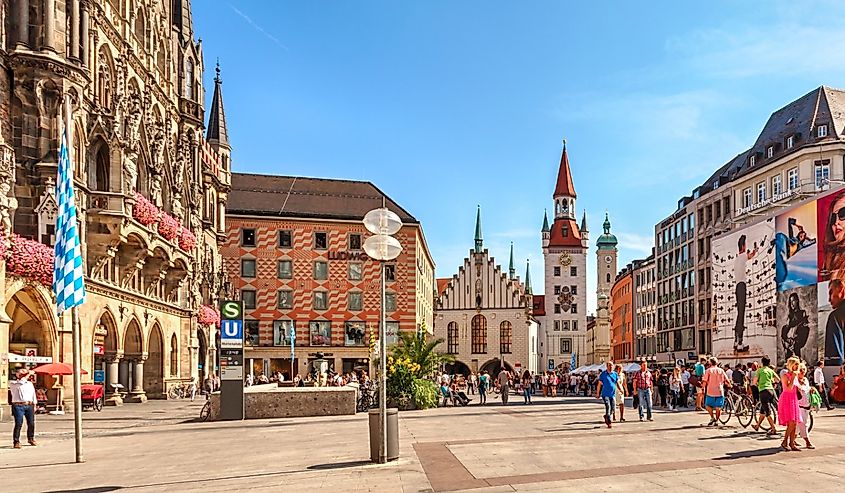
Marienplatz is Munich’s heart and soul and has been the city’s central square since 1158. Named after the Marian column at its center, erected in 1638 to celebrate the end of Swedish occupation, Marienplatz is always bustling with tourists and residents coming and going. This picturesque square is dominated by the New Town Hall (Neues Rathaus), an imposing Gothic Revival building constructed between 1867 and 1909 that’s famous for its Glockenspiel, an ornate clock tower featuring figures that dance and re-enact stories from Munich's past each day at 11 am and noon.
Next door is the Old Town Hall (Altes Rathaus), which contrasts sharply in style. Originally built in the 14th century and restored in the neo-Gothic style after World War II, the Old Town Hall now houses a toy museum. From here, you’re also perfectly located to enjoy pedestrian-friendly shopping areas and other cultural attractions nearby.
Frauenkirche
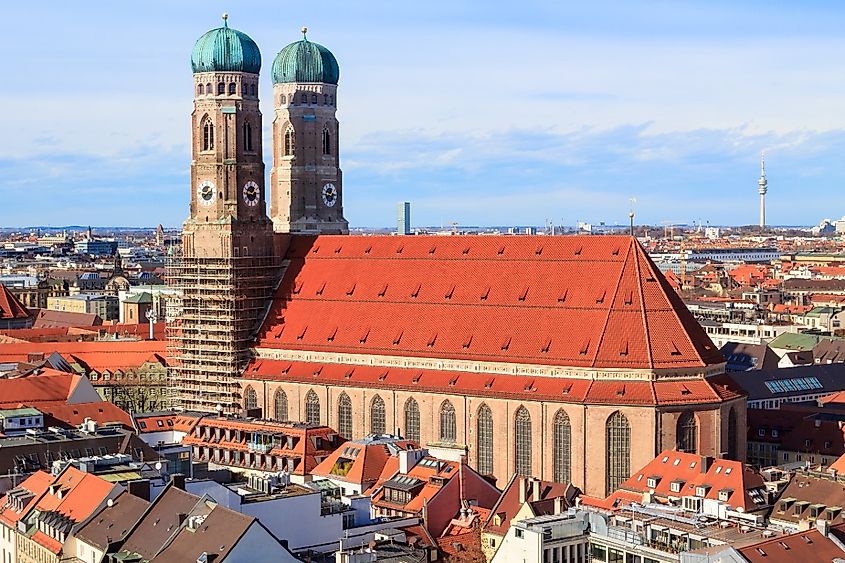
Known officially as the Cathedral of Our Dear Lady, the Frauenkirche is hard to miss for its stunning 325-foot-tall twin towers capped by Renaissance domes. Built between 1468 and 1488, the Frauenkirche is a masterpiece of late Gothic architecture and is large enough to accommodate up to 20,000 worshippers.
As lovely as it is on the outside, be sure to pop in for a look inside. The interior of the Frauenkirche is notable for its vast, open space, which contrasts sharply with the intricate and ornate design typical of most Gothic cathedrals. Highlights include the high altar, the magnificent stained-glass windows, and the numerous artworks and sculptures adorn the cathedral.
Residenz Museum
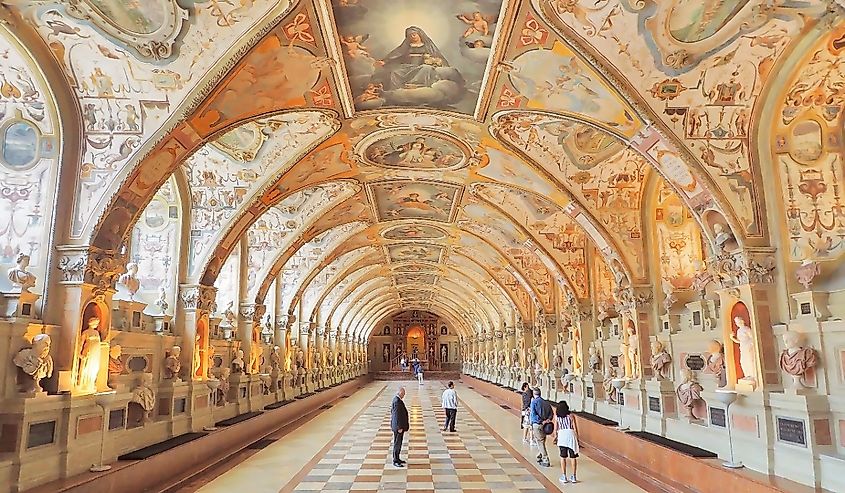
The Residenz Museum in Munich does a magnificent job of showcasing the grandeur and opulence that once defined the Bavarian monarchy. Built between the 16th and 19th centuries, this vast palace consists of a complex of ornate buildings, courtyards, and gardens, and was where Bavarian dukes, electors, and kings ruled until 1918. Each left its unique mark on the building, resulting in a fascinating blend of Renaissance, Baroque, Rococo, and Neoclassical elements.
Highlights of its more than 130 rooms include the beautiful Antiquarium, the palace’s oldest room and renowned for its impressive collection of sculptures and frescoes; numerous lavishly decorated apartments and staterooms; and the Treasury with its large collection of jewels and precious objects dating back to the early Middle Ages.
Self-guided tours are the way to go (audio guides are provided), and friendly staff are strategically placed and ready to answer your questions (they all speak English!). A word of advice: with other attractions to explore during your three-day stay in Munich, you’ll want to follow the signs for the "short" (but still exhausting!) tour.
Viktualienmarkt
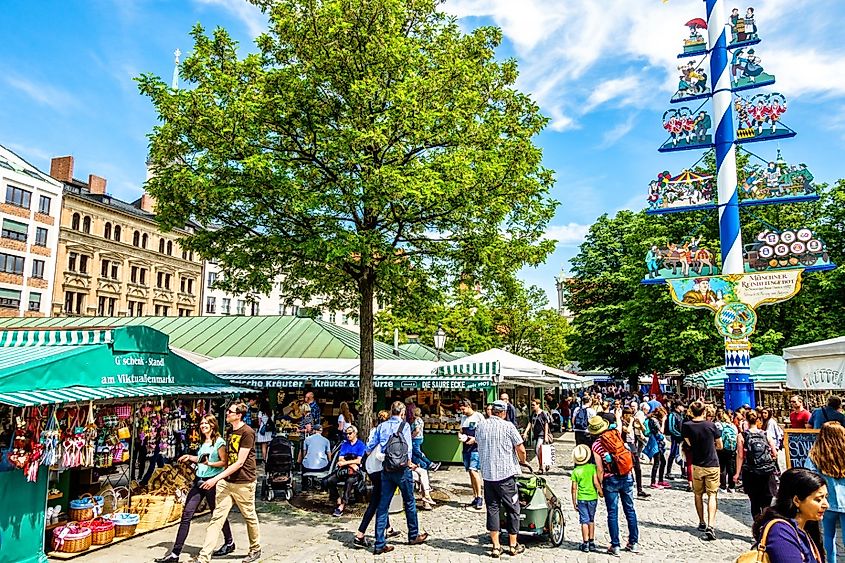
If you are a foodie, you will definitely want to include the Viktualienmarkt on your walking tour of Old Town Munich. Established in 1807 as a farmers' market, this vibrant marketplace has evolved into one of Germany’s most popular gourmet food destinations. Covering an area of 22,000 square meters, there’s a lot to see and sample here, so bring your appetite with you.
The market’s more than 140 stalls and shops offer an eclectic mix of fresh produce, exotic spices, handmade cheeses, artisan bread, and specialty meats, most of which can sampled or bought and carried out to enjoy in the beer garden (biergarten), one of the oldest in Munich.
English Garden
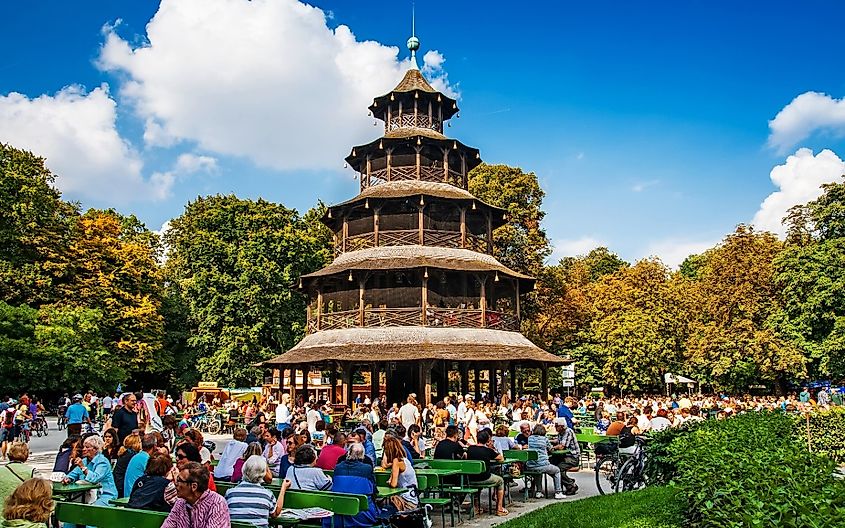
The sprawling English Garden (Englischer Garten) is a must-visit destination in Munich. Covering almost two square miles of prime real estate, it is not only one of the world's largest urban public parks (it is larger than New York's Central Park), but it is also one of the prettiest.
Created in 1789 by Englishman Sir Benjamin Thompson, the park was initially designed for military gardens but later opened to the public. Its layout is reminiscent of traditional English country parks and features vast green meadows, winding streams, and dense woodlands that feel a million miles away from the hustle and bustle of the nearby city center. Crisscrossed with walking and jogging paths, it’s a popular spot for outdoor enthusiasts.
The park is also home to several beer gardens worth visiting. The Chinesischer Turm (Chinese Tower) is the most famous, centered around an 82-foot-high pagoda, and is a great spot to enjoy traditional Bavarian beer and snacks at any time of day.
Maximilianstrasse
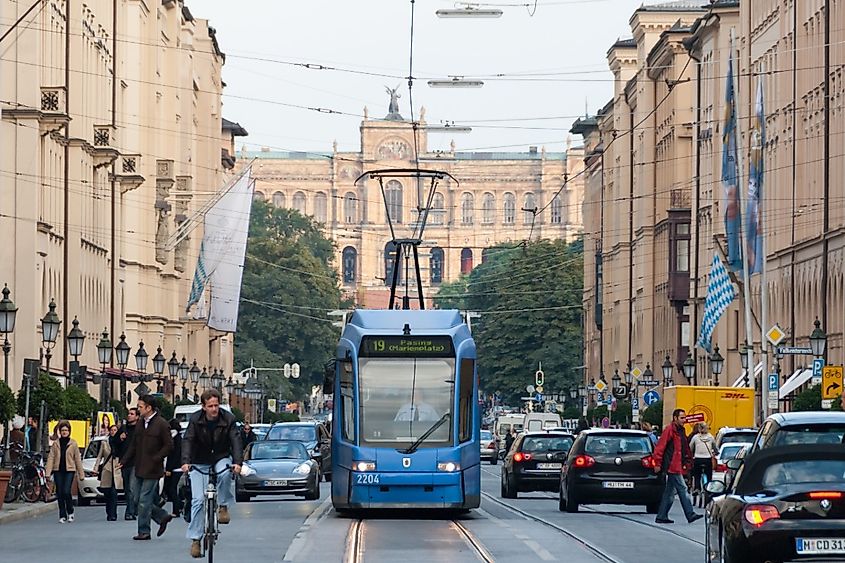
Named after King Maximilian II of Bavaria, Maximilianstrasse is one of the city's four royal avenues laid out in the mid-1800s as a grand boulevard. It’s still one of the most exclusive and elegant streets in Munich, stretching from Max-Joseph-Platz to the Isar River and lined with neo-Gothic buildings that now house some of the world's most prestigious luxury brands and designer boutiques.
You will also come across several cultural landmarks as you stroll along Maximilianstrasse. These include The Residenz Theatre and the Schauspielhaus, two of Munich's most important theaters, and the National Theatre, renowned for its opera performances.
St. Peter's Church (Alter Peter)
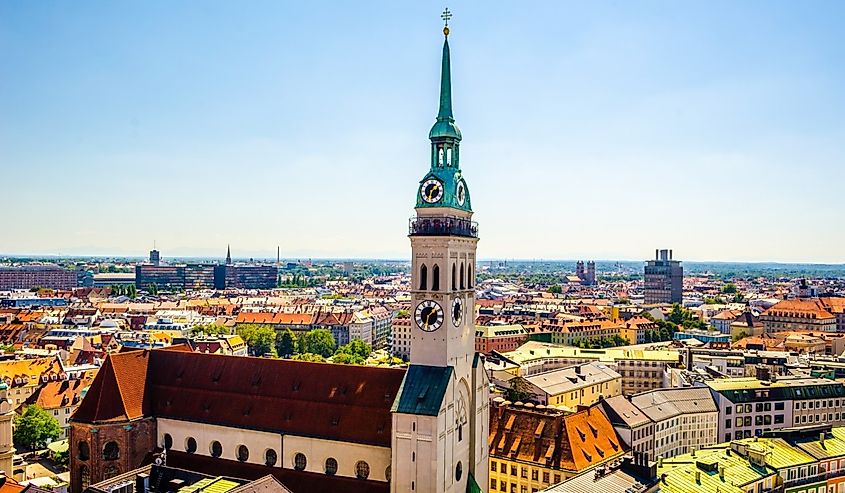
Known to locals as "Alter Peter," St. Peter's Church is the city's oldest parish church and can trace its roots back to the 12th century. Much of what you see today, however, stems from the 14th century, with Gothic, Renaissance, and Baroque flourishes added down the years. Be sure to spend at least a few minutes checking out the building’s attractive interior, which features elaborate artwork and a stunning gold-leaf high altar. The ceiling frescoes and the intricate stained glass are also worth seeing.
If you get the chance, climb the 299 steps to the top of the church tower; the views over the Marienplatz and the Old Town to the Alps are superb and make the climb, however tiring, well worth the effort.
Deutsches Museum
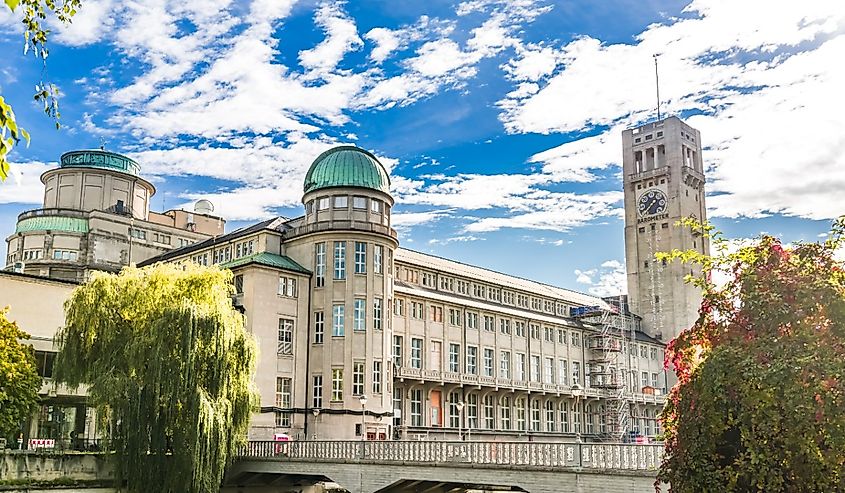
For those interested in the evolution of science and technology, the Deutsches Museum is a must-visit. One of the world’s largest science and technology museums, it was founded in 1903 and opened in 1925 on an island in the Isar River. It offers a fascinating journey through scientific and technological development across various disciplines.
Spread across seven floors and boasting an incredible 28,000 exhibited objects from 50 fields of science and technology, you could easily spend hours here. But plan carefully and stick to your "must-sees," and you can be in and out in around two hours, including a riverside stop for a coffee.
Personal reccomendation? Spend most of your time exploring the aerospace exhibit, which features an extensive collection of aircraft and space vehicles, and the maritime section with its model ships and submarines. If you have time afterward, wander along the lovely garden paths lining the Isar River.
Royal Bavarian Purveyors to the Court
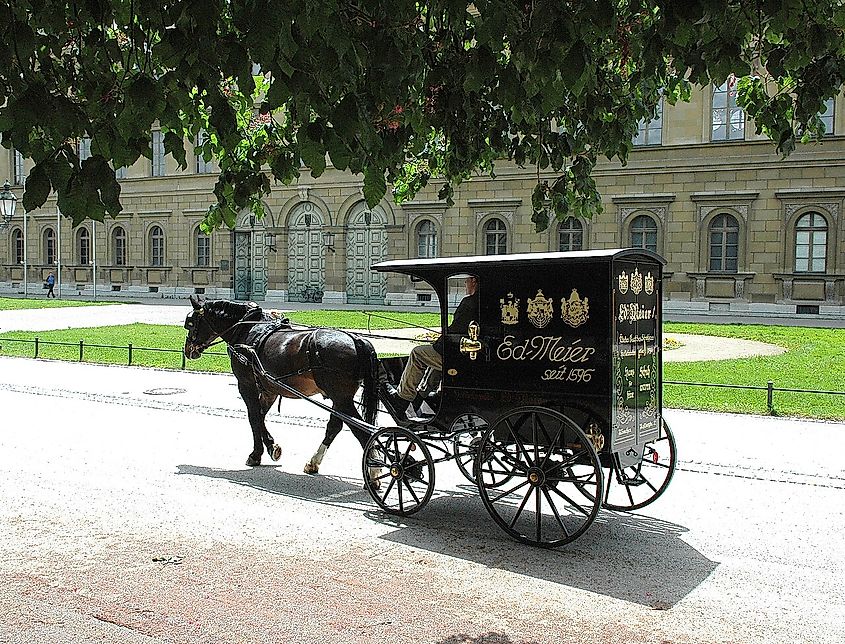
If you can do one "organized" outing in Munich, make it the Royal Bavarian Purveyors to the Court tour. Lasting around two hours, these fascinating tours offer a glimpse into the city's regal past and that enduring tradition of craftsmanship and quality Germans (and Bavarians in particular) pride themselves on.
It’s also a great way to see parts of the Old Town you might not otherwise see, including centuries-old businesses that once supplied the Bavarian royal court, a prestigious award given by the Bavarian kings, including beloved Prince Regent Luitpold. Along the way, you’ll pop into shops that still proudly display the royal coat of arms, a mark of their historical significance.
Led by an official guide of the City of Munich, a highlight is visiting the historic Ed Meier shop, a shoe and clothing outlet established in 1596 and run by descendants of the founder to this day.
Hofbräuhaus
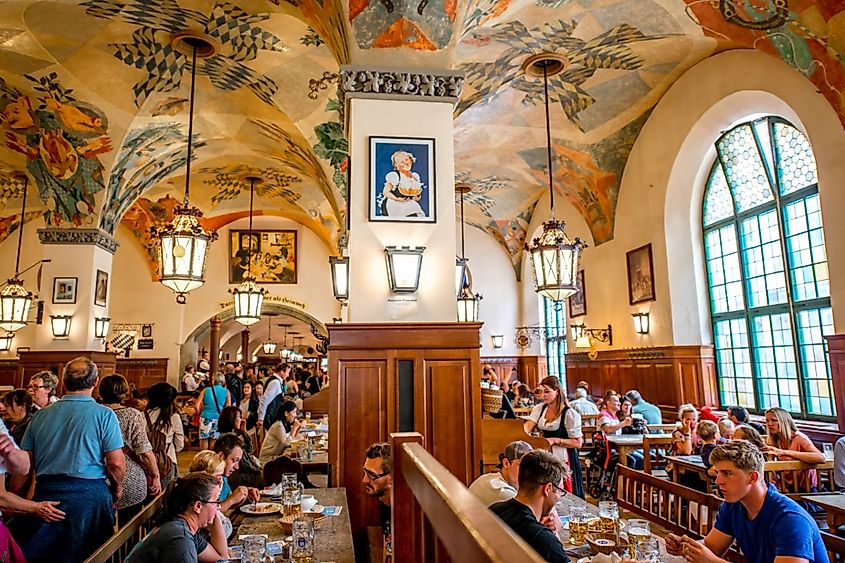
No visit to Munich would be complete without a visit to at least one of the city’s many historic breweries. Topping the list of must-try breweries is the Hofbräuhaus, a classy tavern established in 1589 by the Duke of Bavaria, Wilhelm V, as a brewery for the royal court. Now a popular watering hole for locals and tourists alike, it’s as authentic a Bavarian beer experience as possible.
As enticing as it is to sit on the patio, at least take a peek inside the "Schwemme," the old beer hall adorned with vaulted ceilings, long wooden tables, historical frescoes, and, if you are lucky, live oompah bands playing traditional Bavarian music.
The beer? It is exceptional and is brewed according to age-old recipes and techniques. If you only have one, make it the Hofbräu Original, a classic Munich lager that goes well with Bavarian specialties like pretzels, Weisswurst (Bavarian white sausage), and Schweinshaxe (pork knuckle).
Where to Stay in Munich
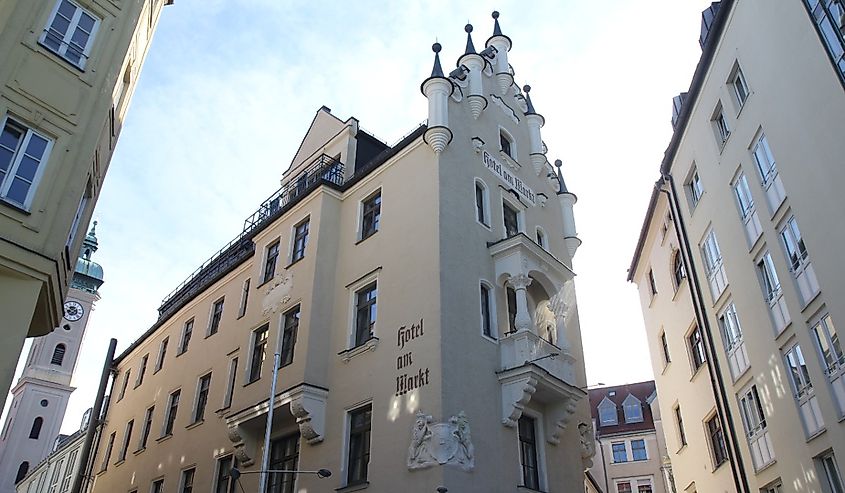
If you can swing a little 5-star luxury, you cannot do better than book a stay at the Rosewood Munich. Set in a former state bank and an old palace, this opulent new Munich hotel oozes history, from its grand old staircases to original sculptures of Bavarian princes. It’s also only a five-minute walk from the city’s historic center, the Marienplatz. Its restaurant, Brasserie Cuvilliés, offers mouth-watering twists on traditional Bavarian dishes in a stunning 1920s Art Deco-styled dining room.
Other good options for a stay in Old Town Munich include Hotel Am Markt, handily located a minute’s walk from the city’s famous food market, the Viktualienmarkt, and Platzl Hotel, located mid-way between the Marienplatz and the Hofgarten.
More affordable hotel options are just outside the Old Town area. Though you will add around 10 or 15 minutes more walking time, they make up for it by being cheaper and close to the city’s main train and bus stations. Popular choices include Hotel Cocoon Stachus, Arthotel Munich, and Sofitel Munich Bayerpost, which backs onto the train station.
From opulent palaces to royal shopkeepers, from centuries-old historic cathedrals to museums of modern technology, these ten best destinations in Munich will keep you busy over a three-day visit to Munich. Uncover more about the best things to do in Munich and be inspired for your next trip.







